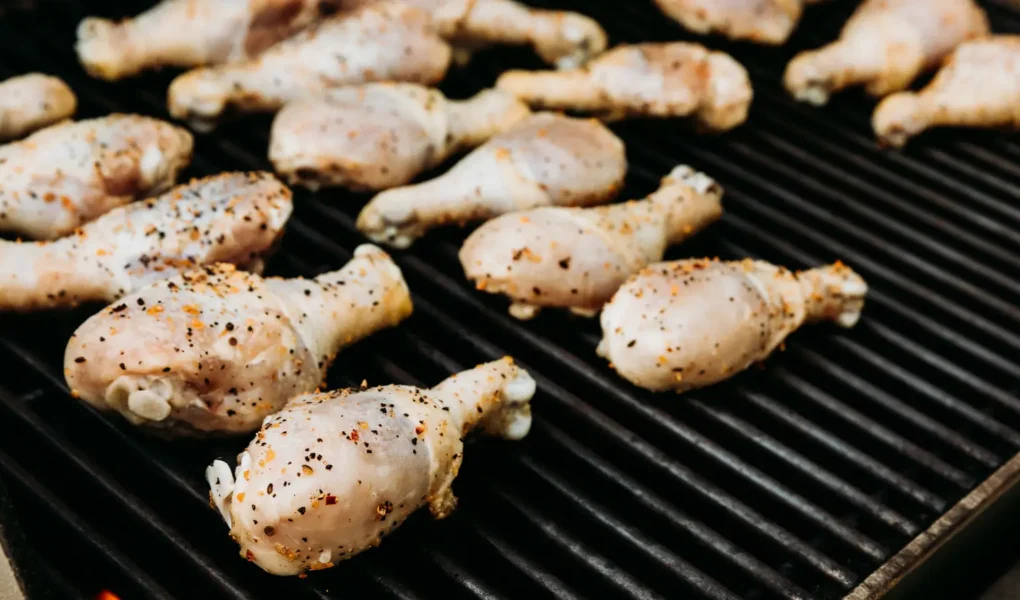Eating chicken is a staple in many diets around the world, but ensuring it’s cooked properly is crucial for your health. Undercooked chicken refers to poultry that hasn’t reached the safe internal temperature needed to kill harmful bacteria. This can pose significant health risks, making food safety an essential topic for anyone who cooks or consumes chicken. In this article, we’ll explore what undercooked chicken is, the risks associated with eating it, and how to ensure your chicken is safe to eat.
Understanding Undercooked Chicken
What Constitutes Undercooked Chicken?
Undercooked chicken is any poultry that hasn’t been cooked to the recommended internal temperature. This means the meat may still harbor bacteria that can cause foodborne illnesses. The USDA recommends cooking chicken to an internal temperature of 165°F (74°C) to ensure safety.
Common Cooking Temperatures for Chicken
Cooking chicken to the right temperature is crucial. Here are some guidelines:
- Whole chicken: 165°F (74°C)
- Chicken breasts: 165°F (74°C)
- Ground chicken: 165°F (74°C)
Using a food thermometer is the best way to ensure your chicken has reached these temperatures.
Signs of Properly Cooked Chicken
Properly cooked chicken should be white all the way through, with no pink meat. The juices should run clear, not pink or red. If you’re unsure, always use a thermometer to check the internal temperature.
Risks Associated with Eating Undercooked Chicken

Overview of Foodborne Illnesses
Eating undercooked chicken can lead to foodborne illnesses, which are infections or irritations of the gastrointestinal tract caused by bacteria, viruses, or parasites.
Specific Bacteria Associated with Undercooked Chicken
- Salmonella: This bacterium is one of the most common causes of food poisoning. It can cause symptoms like diarrhea, fever, and abdominal cramps.
- Campylobacter: Often found in raw or undercooked poultry, Campylobacter can cause diarrhea, cramping, and fever.
- Clostridium perfringens: This bacterium can cause abdominal pain and diarrhea, typically within 6 to 24 hours after consumption.
Symptoms of Food Poisoning from Undercooked Chicken
Symptoms can vary but often include nausea, vomiting, diarrhea, abdominal pain, and fever. These symptoms can appear within hours or days after consuming contaminated chicken.
Health Implications of Foodborne Illnesses

Short-term Effects of Consuming Undercooked Chicken
The immediate effects of eating undercooked chicken can be quite unpleasant. Nausea, vomiting, and diarrhea are common symptoms that can lead to dehydration if not managed properly.
Long-term Health Risks
In severe cases, foodborne illnesses can lead to long-term health issues. Complications can include chronic arthritis, brain and nerve damage, and even death in vulnerable populations such as children, the elderly, and those with weakened immune systems.
What to Do If You Suspect Food Poisoning
Immediate Steps to Take
If you suspect you’ve eaten undercooked chicken, it’s important to stay hydrated. Drink plenty of fluids to replace lost electrolytes and prevent dehydration.
When to Seek Medical Attention
Seek medical attention if you experience severe symptoms such as high fever, blood in stools, prolonged vomiting, or signs of dehydration like dizziness and decreased urination.
Importance of Hydration and Rest
Rest is crucial for recovery. Ensure you get plenty of sleep and avoid strenuous activities until you feel better.
Prevention Tips
Proper Cooking Techniques
- Recommended Internal Temperature for Chicken: Always cook chicken to an internal temperature of 165°F (74°C).
- Use of Food Thermometers: A food thermometer is an essential tool for ensuring your chicken is cooked safely.
Safe Handling Practices
- Cross-contamination Prevention: Use separate cutting boards for raw chicken and other foods.
- Proper Storage of Chicken: Store chicken in the refrigerator at 40°F (4°C) or below and use it within 1-2 days.
Myths and Misconceptions About Undercooked Chicken

Common Myths
- “It’s safe if it looks cooked”: Appearance can be deceiving. Always use a thermometer to check doneness.
- “Rinsing chicken removes bacteria”: Rinsing can actually spread bacteria to other surfaces.
Clarifying Misconceptions About Chicken Doneness
Understanding that visual cues are not reliable for determining doneness is crucial. Always rely on temperature checks.
Cooking Tips for Safe Chicken Preparation
Best Practices for Cooking Chicken
- Marinating and Brining: These techniques can enhance flavor and tenderness but should be done safely to avoid contamination.
- Recommended Recipes That Ensure Safe Cooking: Opt for recipes that include thorough cooking methods, such as baking or grilling.
Conclusion
Eating undercooked chicken can pose serious health risks, but by following proper cooking and handling techniques, you can enjoy chicken safely. Prioritize food safety in your kitchen and encourage others to do the same. Share your experiences or tips on cooking chicken safely in the comments below!




